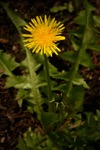Notice (8): Undefined index: geoplugin_countryCode [APP/Controller/AppController.php, line 94]Code Context$Country_code = '';if($ip_data && $ip_data['geoplugin_countryCode'] != null) {$Country_code = $ip_data['geoplugin_countryCode'];$client = null $forward = null $remote = '216.73.216.106' $ip = '216.73.216.106' $ch = unknown $ip_data_in = '{ "geoplugin_status":429, "geoplugin_message": "Blacklisted due to sending too many requests to geoplugin.net. Consider whitelisting your IP or domain", "geoplugin_url": "https://www.geoplugin.com/premium/" } ' $ip_data = [ 'geoplugin_status' => '429', 'geoplugin_message' => 'Blacklisted due to sending too many requests to geoplugin.net. Consider whitelisting your IP or domain', 'geoplugin_url' => 'https://www.geoplugin.com/premium/' ] $Country_code = ''App\Controller\AppController::initialize() - APP/Controller/AppController.php, line 94 App\Controller\ProductsController::initialize() - APP/Controller/ProductsController.php, line 31 Cake\Controller\Controller::__construct() - CORE/src/Controller/Controller.php, line 273 ReflectionClass::newInstance() - [internal], line ?? Cake\Http\ControllerFactory::create() - CORE/src/Http/ControllerFactory.php, line 47 Cake\Http\ActionDispatcher::dispatch() - CORE/src/Http/ActionDispatcher.php, line 91 Cake\Http\BaseApplication::__invoke() - CORE/src/Http/BaseApplication.php, line 235 Cake\Http\Runner::__invoke() - CORE/src/Http/Runner.php, line 65 Cake\Http\Runner::__invoke() - CORE/src/Http/Runner.php, line 65 Cake\Http\Middleware\CsrfProtectionMiddleware::__invoke() - CORE/src/Http/Middleware/CsrfProtectionMiddleware.php, line 108 Cake\Http\Runner::__invoke() - CORE/src/Http/Runner.php, line 65 Cake\Http\Runner::run() - CORE/src/Http/Runner.php, line 51 Cake\Routing\Middleware\RoutingMiddleware::__invoke() - CORE/src/Routing/Middleware/RoutingMiddleware.php, line 168 Cake\Http\Runner::__invoke() - CORE/src/Http/Runner.php, line 65 Cake\Routing\Middleware\AssetMiddleware::__invoke() - CORE/src/Routing/Middleware/AssetMiddleware.php, line 88 Cake\Http\Runner::__invoke() - CORE/src/Http/Runner.php, line 65 Cake\Error\Middleware\ErrorHandlerMiddleware::__invoke() - CORE/src/Error/Middleware/ErrorHandlerMiddleware.php, line 96
| Scientific: | Taraxacum officinale |
|---|---|
| Other: | Dandelion |
| Family: | Asteraceae |
Dandelion grows throughout the northern hemisphere where its used to treat digestive disorders. The leaves can be added to salads and eaten as part of the diet for its rich nutrient content. Herbalists recommend boiling the root in water to promote digestion and treat liver conditions and gallbladder complaints. Both the roots and leaves contain bitter-tasting sesquiterpene lactones that stimulate digestive juices and promote bile flow.
- The leaves show promise as a diuretic to treat edema, blood pressure, and urinary issues like kidney stones.
Gastrointestinal
• atonic digestive complaints
• dyspepsia
• hypochlorhydria
• pancreatic insufficiency
• sluggish bowels
• chronic constipation
Hepatobiliary
• biliary insufficiency
• cholestasis
• cholelithiasis (gallstones)
• jaundice
Urinary (leaf only)
• edema
• calculi
Musculoskeletal
• chronic rheumatism
• arthritis
• gout
• Bitter
• Stomachic
• Cholagogue
• Cholarectic
• Diuretic (Leaves)
• alterative
• Choleretic
• Antimicrobial
• Laxative (Mild )
• Sesquiterpene Lactones (E.g. Taraxacin)
• Flavonoids
• Triterpenoids
• Inulin (Roots)
• Phenoilc Acids
• Potassium (Leaf )
• Tincture (1:5 in 40% EtOH): 5-10 ml tid
• Liquid extract (1:1 in 25% EtOH): 2-6 ml tid
• Decoction (dried root): 2-3 tsp g tid
• Infusion (dried leaf): 1-2 tsp tid
- generally considered safe when used as indicated.
Contra-Indications:
• gastritis & stomach ulcers
• obstructed gallbladder
• ast
Barnes J, Anderson LA, Phillipson JD. Herbal Medicines, 3rd ed. London: Pharmaceutical Press, 2007.
Bone K. Principles and Practice of Phytotherapy. Edinburgh: Churchill Livingstone, 2000.
Bone K. A Clinical Guide to Blending Liquid Herbs: Herbal Formulations for the Individual Patient. St Louis, MO: Churchill Livingstone, 2003.
Brinker F. The Toxicology of Botanical Medicines, 3rd ed. Sandy, Oregon: Eclectic Medical Publications, 2000.
Felter HW, Lloyd JU. King's American Dispensatory. 1898. http://www.ibiblio.org/herbmed/eclectic/kings/main.html. Accessed: August 19, 2006.
Hoffman D. Medical Herbalism. Rochester, Vermont: Healing Arts Press, 2003.
Weiss RF. Herbal Medicine. Beaconsfield, England: Beaconsfield Publishers Ltd, 1988.
Williamson EM, ed. Major Herbs of Ayurveda. Edinburgh: Churchill Livingstone, 2002
Disclaimer: This content is subject to change. The information is intended to inform and educate; it does not replace the medical evaluation, advice, diagnosis or treatment by a healthcare professional. www.nhpassist.com © 2014 NDAssist Inc. and/or its affiliates. All rights reserved.

|
Dandelion
SummaryDandelion grows throughout the northern hemisphere where its used to treat digestive disorders. The leaves can be added to salads and eaten as part of the diet for its rich nutrient content. Herbalists recommend boiling the root in water to promote digestion and treat liver conditions and gallbladder complaints. Both the roots and leaves contain bitter-tasting sesquiterpene lactones that stimulate digestive juices and promote bile flow. IndicationsSign in requiredActionsSign in requiredConstituentsSign in requiredPosologySign in requiredSafetySign in requiredReferencesSign in required |
|---|